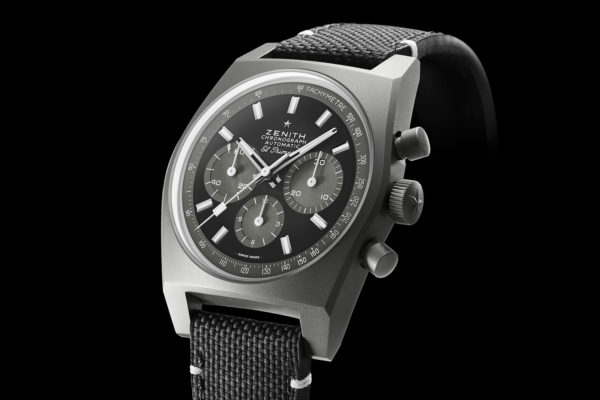

According to Zenith, longtime employees had heard of and even seen the rare prototype, despite few records existing about the so-called “mystery” watch.įast forward to last year when Zenith began celebrating the 50th anniversary of the famous 5Hz El Primero chronograph, and as the story goes, the team at the manufacture in Le Locle, Switzerland went into a secret walled-off attic where the company’s founder Charles Vermot had once hidden all the plans and parts necessary to produce the El Primero movement.Īmong countless artifacts was a box containing the original prototype of the black chronograph that reportedly had not been seen by anyone since the early 1970s. Only a limited number were ever made and the timepiece was never brought to market.

Shortly after Zenith debuted the automatic El Primero movement in 1969, the company produced a prototype manual-winding chronograph - in a blackened steel case. Mr Tornare, take a bow.Inspired by a black chronograph prototype from 1970, the Chronomaster Revival Shadow is presented in an A384 case, Zenith’s first watch to house the El Primero. The Original and quite possibly the best. There are strap options, too, and, of course, given its role in the watch, the El Primero gets its moment in the sun through a gaping sapphire case back.

Cool as that was and is, it’s an acquired taste, so the new collection has a more mainstream three-link bracelet design. The 1960s model had a laddered design created by specialist Gay Frères, as seen on some of Zenith’s Chronomaster Revival models recently. One area of difference is the bracelet design. Despite the level of detail, and that its squeezed into a relatively small dial by modern chronograph standards, the read-out is fabulously well balanced and, dare I say it, far clearer than on the Chronomaster Sport. The inner of these still shows 100 segments, now used to break down the ten seconds it takes for the red hand to complete a full tour of the dial the outer, once a tachymeter, now shows the tenths of a second. New to the design is how the two scales around the outside edge of the dial are used.


 0 kommentar(er)
0 kommentar(er)
